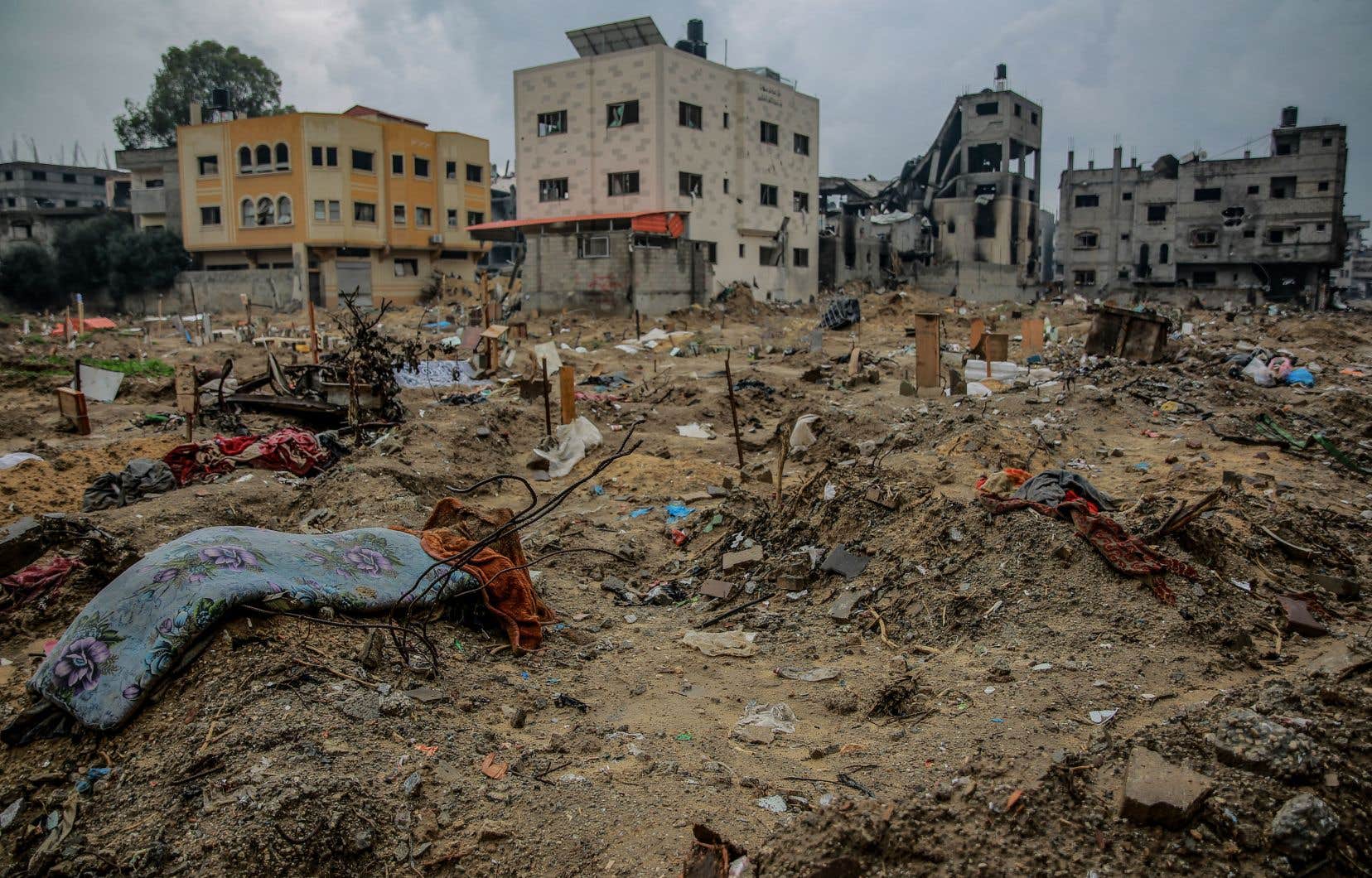Some bodies are exhumed by the Israeli army in search of hostage remains, others are hastily buried, sometimes in hospitals or schools. In Gaza, even the corpses are not at peace.
In the al-Tuffah district of Gaza City, in the north of the Palestinian territory, bodies wrapped in shrouds emerge from the rough ground. The army has invaded the site with bulldozers, according to an AFP photographer who visited the site several days ago.
The Ministry of Religious Affairs says that 2,000 graves have been opened or destroyed in the territory.
Questioned by AFP, the Israeli army did not comment on the use of bulldozers. But she admits to acting “in specific places where information indicates that the bodies of hostages can be located”.
“The bodies which it is established are not those of hostages are returned with dignity and respect,” she said in a press release.
The unprecedented Hamas attack on October 7 resulted in the deaths of around 1,140 people in Israel, mostly civilians, according to an AFP count based on official Israeli figures.
In response, Israel vowed to “annihilate” the Palestinian Islamist movement and launched a vast military operation in Gaza, which left 26,637 dead, the vast majority of women, children and adolescents, according to the latest report Monday from the Ministry of Defense. Hamas Health.
“Their souls trembled”
From the school in Deir al-Balah governorate (central Gaza Strip) where she lives with many other people displaced by the war, Saida Jaber remembers the moment she saw images of the destroyed cemetery of the camp Jabaliya on social networks.
“I thought my heart was going to stop,” says this woman whose father, grandparents and other relatives are buried on the site. “I felt their souls tremble […]. I can’t imagine how anyone dares to dig into graves and violate the sanctity of the dead. »
The violence of the fighting over the past five months, which has displaced a large majority of Gaza’s 2.4 million inhabitants, has made it impossible for many of them to find a cemetery worthy of the name.
We had to make it as simple as possible.
In a school that has become a shelter for displaced people from the Maghazi refugee camp (center), a woman places her hand on the ground. His daughter is buried there.
She “died in my arms. We waited a day and a night, but we couldn’t take him to the emergency room,” she said, without giving her name. She claims rockets hit the school complex, causing gas cylinders to explode.
A man who approaches the site claims that 50 bodies are buried there, three or four bodies in each grave, their names written on a brick or on an adjacent wall.
“To die of sorrow”
Since the start of the conflict, AFP journalists have seen mass graves throughout the Gaza Strip. Including in al-Shifa hospital, where bodies were buried in rows, the graves separated by stones or tree branches planted in the ground.
“If we had gone to the cemetery, [les Israéliens] could have bombed us and we would have died,” explains Arfan Dadar, 46, who lives in a tent with his family on the hospital grounds.
He says his 22-year-old son was shot on his way back to the hospital. “I marked his grave,” but “now the hospital grounds are full of mass graves. I barely recognize my son’s grave.”
Some hope to be able to hold a proper funeral once the war is over. Wael al-Dahdouh, head of the Al-Jazeera television channel in Gaza, says he “had no choice” but to bury his son, killed by an Israeli strike, in an overcrowded cemetery in south of Rafah, near the Egyptian border.
“We will transfer him to the cemetery of the martyrs of [la ville de] Gaza after the war. We want his grave to be near us, so that we can come and see him and pray for him. »
Moved to Deir al-Balah, Saida Jaber wants to return to Jabaliya to check that her loved ones are still buried there. “I would die of grief if they were taken away. »
